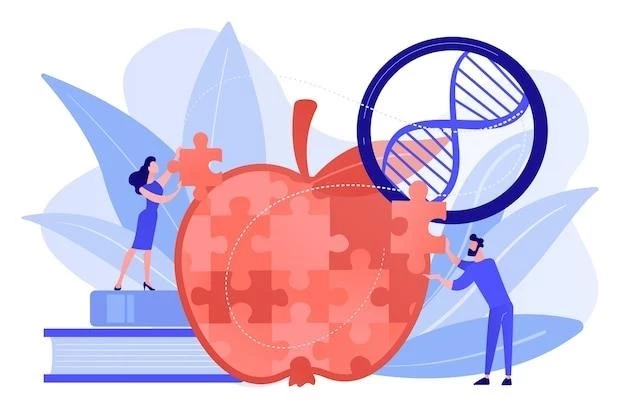Nijmegen Breakage Syndrome Overview
Nijmegen Breakage Syndrome (NBS) is a rare autosomal recessive disorder characterized by chromosomal instability, microcephaly, immunodeficiency, and an increased risk of cancer primarily lymphoma. It is associated with mutations in the NBN gene, impacting DNA repair mechanisms.
Characteristics of Nijmegen Breakage Syndrome
Nijmegen Breakage Syndrome (NBS) is a rare autosomal recessive disorder characterized by progressive microcephaly, immunodeficiency, radiation sensitivity, short stature, distinctive facial features, recurrent respiratory infections, and a predisposition to hematological malignancies, primarily lymphoma. Patients may also experience premature ovarian failure, slow growth in infancy, and delayed development. The condition is associated with chromosomal instability, DNA repair impairment, and a high risk of cancer, especially during the first two decades of life. NBS is caused by mutations in the NBN gene, affecting its role in DNA repair mechanisms and increasing susceptibility to double-strand breaks and genomic instability. Due to its rarity, Nijmegen Breakage Syndrome requires specialized diagnosis, management, and supportive care to address the diverse clinical manifestations and long-term health implications.
Clinical Features
Nijmegen Breakage Syndrome (NBS) is characterized by progressive microcephaly, early growth deficiency, immunodeficiency, radiation sensitivity, distinctive facial features, and a high risk of malignancy, primarily lymphoma. Patients may also experience premature ovarian failure, recurrent infections, and developmental delays. The condition is associated with chromosomal instability due to DNA repair impairments linked to NBN gene mutations.
Progressive Microcephaly and Growth Deficiency
Nijmegen Breakage Syndrome (NBS) manifests with progressive microcephaly, where patients have a smaller than average head size that worsens over time, and growth deficiency that often improves as individuals age. This condition leads to various developmental challenges and an increased risk of malignancy, notably lymphoma. The presence of these primary features is crucial for the clinical identification and management of NBS.
Increased Risk for Malignancy
Individuals with Nijmegen Breakage Syndrome (NBS) face an elevated risk for malignancies, notably lymphoma, due to the underlying chromosomal instability and impaired DNA repair mechanisms associated with this condition. This heightened susceptibility underscores the importance of regular monitoring and early detection strategies to manage and treat potential malignancies effectively.
Genetic Basis
Nijmegen Breakage Syndrome (NBS) is an autosomal recessive disorder caused by mutations in the NBN gene, leading to DNA repair impairments and chromosomal instability. These mutations affect processes like double-strand break repair, meiotic recombination, and telomere maintenance, contributing to the characteristic features and cancer predisposition seen in NBS patients.
Role of NBN Gene Mutations
Nijmegen Breakage Syndrome (NBS) is a consequence of mutations in the NBN gene on chromosome 8q21, leading to impaired DNA repair mechanisms. These mutations disrupt processes crucial for maintaining genomic stability, such as DNA double-strand break repair, meiotic recombination, and telomere maintenance. The presence of these genetic alterations underlies the chromosomal instability and cancer predisposition observed in individuals with NBS.
Mechanisms of DNA Repair Impairment
Nijmegen Breakage Syndrome (NBS) arises from mutations in the NBN gene, affecting DNA repair mechanisms like double-strand break repair and meiotic recombination. These impairments lead to chromosomal instability, radiation sensitivity, and an elevated predisposition to malignancies, particularly lymphoid malignancy, in individuals with NBS.
Diagnosis and Prognosis
Nijmegen Breakage Syndrome (NBS) is diagnosed through genetic testing to identify mutations in the NBN gene. Prognosis varies based on the severity of the condition, with early detection crucial for implementing appropriate management strategies. Factors impacting disease progression include the presence of immunodeficiency, chromosomal instability, and the development of malignancies.
Methods for Diagnosing Nijmegen Breakage Syndrome
Nijmegen Breakage Syndrome (NBS) is diagnosed through genetic testing to identify mutations in the NBN gene. This testing enables the confirmation of the condition and guides prognosis and personalized treatment plans for affected individuals.
Prognostic Factors Impacting Disease Progression
The prognosis of Nijmegen Breakage Syndrome (NBS) is influenced by factors such as the presence of microcephaly, immunodeficiency, and the risk of malignancy, particularly lymphoma. Early diagnosis, genetic counseling, and personalized treatment plans play crucial roles in determining the disease course and outcomes for individuals affected by NBS.

Management Strategies
Management of Nijmegen Breakage Syndrome (NBS) involves a multidisciplinary approach focusing on genetic counseling, regular monitoring for malignancies, supportive care tailored to the individual’s needs, and potentially targeted therapies aimed at addressing specific symptoms and complications associated with the condition. Early intervention and ongoing specialized care are essential in optimizing the quality of life for individuals living with NBS.
Current Treatment Approaches
Management of Nijmegen Breakage Syndrome (NBS) typically involves addressing individual symptoms and complications. Supportive care, regular monitoring for malignancies, and tailored interventions to optimize the quality of life of individuals with NBS are imperative. Additionally, targeted therapies may be utilized to manage specific aspects of the condition effectively.
Supportive Care for Patients with Nijmegen Breakage Syndrome
Supportive care for individuals with Nijmegen Breakage Syndrome (NBS) encompasses various approaches tailored to address specific symptoms and challenges associated with the condition. This care includes regular monitoring for potential malignancies, immunodeficiency management, and personalized interventions to enhance the quality of life and overall well-being of NBS patients.

Epidemiology and Genetics
Nijmegen Breakage Syndrome (NBS) is a rare autosomal recessive disorder associated with chromosomal instability, microcephaly, immunodeficiency, predisposition to malignancies, and mutations in the NBN gene. The syndrome is notably prevalent in Slavic populations due to a founder mutation, highlighting the genetic diversity and impact on different demographic groups.
Prevalence in Different Populations
Nijmegen Breakage Syndrome (NBS) is a rare autosomal recessive condition primarily prevalent among Slavic populations due to a common founder mutation. This genetic disorder is characterized by chromosomal instability, immunodeficiency, and a predisposition to malignancies, emphasizing the impact of genetic diversity on disease occurrence across various demographic groups;
Patterns of Inheritance and Genetic Counseling
Nijmegen Breakage Syndrome (NBS) follows an autosomal recessive pattern of inheritance, requiring two copies of the mutated NBN gene for the condition to manifest. Genetic counseling is crucial for individuals and families to understand the risk of passing on NBS, emphasizing the importance of early diagnosis, management, and supportive care in affected individuals while considering future family planning.
